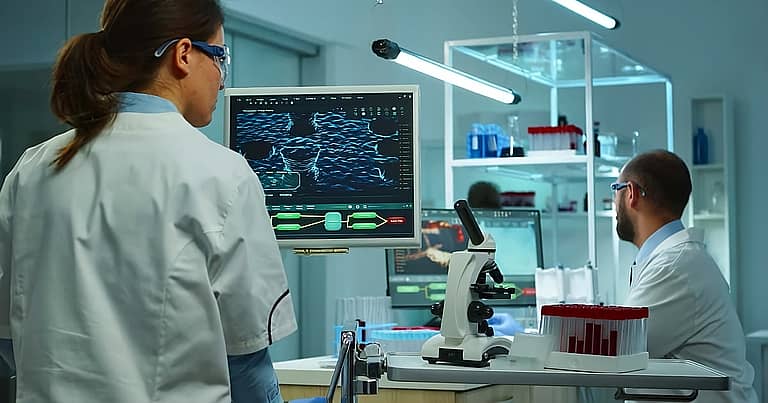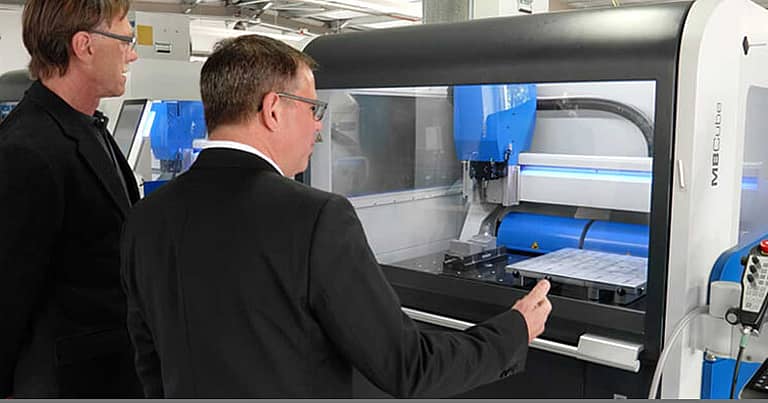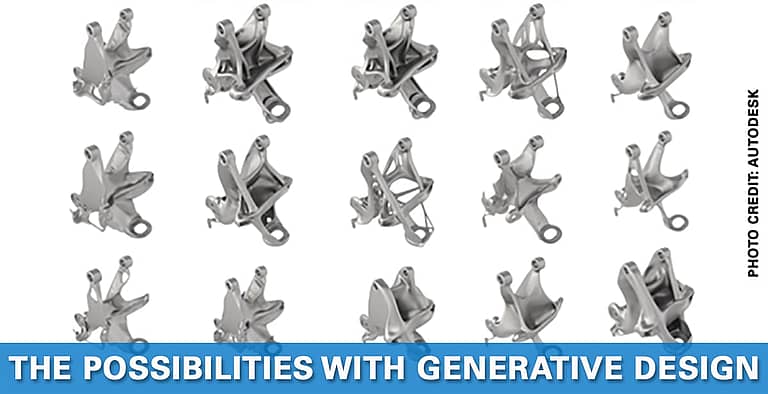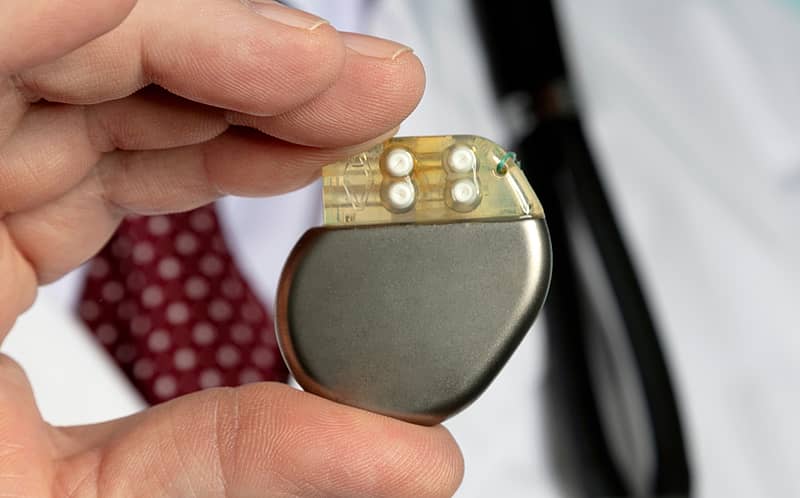
The traditional model of medical device prototyping often involves outsourcing to specialized facilities, leading to lengthy lead times, communication bottlenecks, and limited design iterations. These challenges impede innovation, escalate costs, and hinder the timely delivery of life-enhancing technologies to patients in need. However, the advent of CNC machines has ushered in a new era of medical device prototyping, empowering developers to reclaim control over their innovation process.
CNC machining offers benefits that are tailor-made for the intricate requirements of rapid prototyping medical devices. With unrivaled precision down to micrometer-level accuracy, CNC machines can quickly reproduce complex geometries and intricate details. Whether crafting miniature components for implantable devices or refining the ergonomics of surgical instruments, CNC machining ensures the execution of every design with utmost precision.
With all that being said, it’s time to dive into what rapid prototyping is, the process of rapid prototyping medical devices, and its benefits.
What is Rapid Prototyping?
Rapid prototyping is a process that allows for the quick creation of a physical model or prototype of a device or product using computer-aided design (CAD) software and manufacturing technologies like CNC machining. Unlike traditional manufacturing methods, which often involve lengthy lead times and high costs, rapid prototyping enables engineers and designers to iterate on designs rapidly and produce functional prototypes in a fraction of the time.
Read More: What is Rapid Prototyping?
Rapid Medical Device Prototyping: Process & Benefits with a Milling Machine
Before we explore the benefits of bringing prototyping medical devices in-house, let’s first discuss the process. From the design phase to material selection, programming, and machining process, there are many ways to make rapid prototyping more efficient, saving you time and money.
Design Phase
First up is the design phase, which is arguably one of the most critical phases of this project that you will encounter. This process begins with the conceptualization and design of the medical device. This stage involves collaboration between engineers, designers, and medical professionals to outline specifications and functionalities needed for the product, allowing you to have the necessary information to move forward to the next few steps of the process.
In this phase, Computer-Aided Design (CAD) software is employed to create detailed 3D models of the device where the design is optimized for manufacturability. Being designed for manufacturability means considering factors such as material properties, structural integrity, and ergonomics and applying them to the process.
Material Selection
You must select the materials once you have completed the design phase. CNC machines can work with various materials suitable for medical applications, including metals (e.g., titanium, stainless steel), plastics (e.g., ABS, polycarbonate), and composite materials. The diversity offered by CNC machines is an advantage for rapid prototyping medical devices, as you are not limited in the materials you can use to create the devices.
When selecting a material, considerations include biocompatibility, sterilization compatibility, mechanical properties, dimensional stability, and regulatory requirements. Choosing materials that meet the specific needs and standards of the intended medical application is essential. Additionally, prototype testing and validation should be conducted to ensure the medical device’s functionality, safety, and effectiveness.
Programming
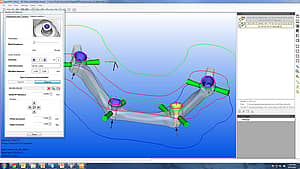
CNC programming for medical devices requires a combination of technical expertise, knowledge of machining processes, and an understanding of the specific requirements of medical device production. Once the design is finalized and the appropriate materials have been selected, the CAD model is translated into machine-readable instructions using Computer-Aided Manufacturing (CAM) software. The programming stage involves specifying toolpaths and tools used, cutting parameters, and machining strategies to achieve the desired geometry and surface finish.
Machining
Next up in the process is machining the part! Machining is where the CNC machine translates the programmed instructions into precise movements of cutting tools to shape the raw material into the desired form. Advanced CNC machines offer multi-axis capabilities that can produce complex geometries with high accuracy, which is crucial for medical device prototyping. During machining, operators monitor the process, making adjustments as necessary to ensure quality and dimensional accuracy.
Finishing and Post-Processing
Finishing and post-processing may be a requirement for any CNC project. Once the initial machining is complete, the prototype may undergo additional finishing processes such as polishing, deburring, and surface treatments to improve aesthetics and functionality.
This step includes essential post-processing like heat treatment or surface coating for improved biocompatibility, matching the application’s needs.
The process for rapid prototyping medical devices may vary depending on the type of device you are trying to make; however, it can become more streamlined and proficient once you have mastered the steps!
Read More: 3 Tips on Faster Rapid Prototyping Machining
Benefits of Rapid Prototyping on CNC Machines
Now that you understand the process behind medical device prototyping on a CNC machine let’s talk about the numerous benefits of bringing this process in-house. CNC machining expedites the process and improves efficiency by harnessing precision, speed, and versatility. This method also offers fast production of high-precision prototypes, enhanced design flexibility, cost-effective production, and improved patient outcomes. Let’s take a deeper look at each benefit of rapid prototyping medical devices on a CNC machine!
Accelerated Development Cycles
One of the most significant benefits of rapid prototyping on CNC machines is the dramatic reduction in development time. Traditional manufacturing methods often involve lengthy setup times and tooling processes, leading to prolonged development cycles. In contrast, CNC machining allows for rapid iteration and refinement of designs, enabling engineers to test and validate concepts quickly. This accelerated development process speeds up time-to-market and facilitates agility in responding to changing design requirements and market demands.
Enhanced Design Flexibility
CNC machines offer unparalleled design flexibility, allowing engineers to create complex geometries and intricate features that may be challenging or impossible to achieve with conventional manufacturing techniques. Rapid prototyping also facilitates easy design changes based on stakeholder feedback, further improving the final product’s quality and effectiveness.
It is also important to note that CNC machining supports a wide range of materials, enabling prototyping in metals, plastics, ceramics, and composite materials. This versatility allows designers to experiment with different materials to achieve the desired mechanical properties, biocompatibility, and sterilization compatibility.
CNC machines deliver unparalleled precision, fabricating intricate medical device components with tight tolerances. This precision ensures that prototypes closely match the intended specifications, which is vital for medical devices where even minor errors can have serious consequences.
Cost-Effective Production
 Although rapid prototyping might seem expensive at first, especially against mass production, the long-term savings can be significant. By finding design flaws early in the development process, companies can avoid costly rework and production delays down the line. CNC also scales up to produce low-volume prototype batches at much lower costs than traditional manufacturing. This cost-effective approach enables companies to repeat designs more freely and explore broader ranges of possibilities without breaking the bank.
Although rapid prototyping might seem expensive at first, especially against mass production, the long-term savings can be significant. By finding design flaws early in the development process, companies can avoid costly rework and production delays down the line. CNC also scales up to produce low-volume prototype batches at much lower costs than traditional manufacturing. This cost-effective approach enables companies to repeat designs more freely and explore broader ranges of possibilities without breaking the bank.
Improved Patient Outcomes
The most crucial advantage of rapid prototyping on CNC machines is the potential to improve patient outcomes. Facilitating the rapid development of medical devices enables professionals to address unmet clinical needs more effectively.
Rapid prototyping helps create patient-specific implants, customized surgical tools, and new diagnostic devices. This technology enables medical professionals to provide personalized, precise care. Quick design iterations, driven by real-world feedback, also foster ongoing healthcare innovation.
Read More: Kansas City Pharmaceutical Design Case Study
Bring Rapid Prototyping In-House
Rapid prototyping of medical devices on CNC machines represents a significant paradigm shift in the healthcare industry. By leveraging advanced manufacturing technologies and design methodologies, companies can accelerate the development process, enhance design flexibility, reduce costs, and improve patient outcomes. As the demand for personalized medicine and innovative healthcare solutions continues to grow, rapid prototyping on CNC machines will play an increasingly vital role in shaping the future of medical device development and healthcare delivery.
If you want to bring the medical device prototyping process in-house, you have come to the right place! DATRON CNC systems make parts faster than you thought possible, allowing you to operate the equipment with an easy, app-driven touchscreen interface. Imagine innovating and creating a precision prototype in hours instead of days or even weeks! Streamline every aspect of your prototyping process today by contacting our knowledgeable team of experts.




